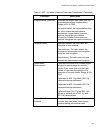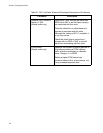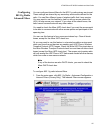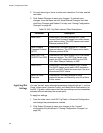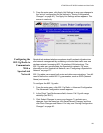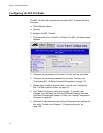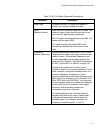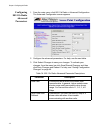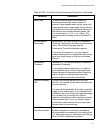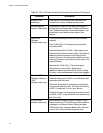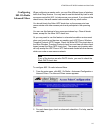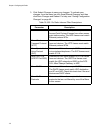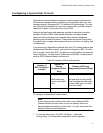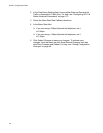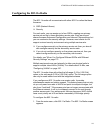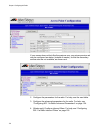
AT-WA7500 and AT-WA7501 Installation and User’s Guide
113
Basic Rate Choose the rate at which the access point
transmits multicast and beacon frames. In
general, higher speeds mean shorter range and
lower speeds mean longer range. Do not set this
rate higher than the maximum rate at which your
end devices can receive multicast frames. You
can set this rate to 11, 5.5, 2, or 1 Mbps. This
parameter should usually be left at the default 2
Mbps.
Enable Medium
Reservation
Determines if you want to specify a reservation
threshold. Check this check box to set a threshold
value. Click Submit Changes, and the
Reservation Threshold parameter appears.
If you clear this check box, you may improve
network response time in installations that usually
send very small frames or that have no hidden
stations.
Reservation
Threshold
Appears only if the Enable Medium Reservation
parameter is checked.
If you enable medium reservation, you need to
set a threshold value, which is the largest data
frame that can be transmitted without reserving
airtime. Airtime is normally reserved to help
prevent collisions with other transmitters.
Distance Between
APs
Controls the roaming sensitivity of your end
devices. This setting should match the setting on
your end devices.
You can use this parameter to virtually reduce the
range of your access point. If you choose Small
or Medium, you do not reduce the absolute range
of your radio, but you modify the collision
detection mechanism to allow significant overlap
of the wireless cells. Thus, you create a higher
performance radio network, but you need more
access points to cover an area.
Enable Microwave
Oven Robustness
Determines if the access point activates a
modified algorithm for automatic rate fallback,
which prevents the access point from falling back
to 1 Mbps when trying to retransmit radio frames
when 2.4 GHz interference is present.
Table 34. 802.11b Radio Advanced Parameter Descriptions (Continued)
Parameter Description



